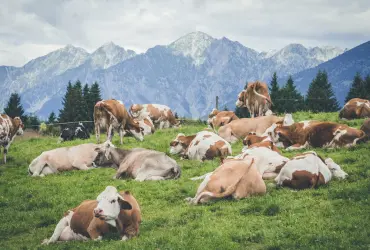Turn All Business Travel Into a Holiday
with a Team That Understands
What You Need
Upcoming Trade Shows in for Livestock & Poultry

VIV Europe 2026, Utrecht, Netherlands
2 - 4 Jun 2026

Great Yorkshire Show 2026, Harrogate, UK
14 - 17 Jul 2026

Royal Welsh Show 2026, Llanelwedd, UK
20 - 23 Jul 2026

Glee 2026, Birmingham, UK
8 - 10 Sep 2026

SPACE 2026, Rennes, France
15 - 17 Sep 2026

EnergyDecentral 2026, Hannover, Germany
10 - 13 Nov 2026

EuroTier 2026, Hannover, Germany
10 - 13 Nov 2026
The global food economy has always been particularly sensitive to consumption patterns, which trigger continuous changes within the livestock and poultry industry. Over the past few decades, the rising economies of Asia have amped meat consumption has surged by over 4% annually due to them being where the bulk of the global population surge unfolds. Demand for milk and dairy products has also witnessed steady growth, ranging from 2% to 3% percent per year. These consumption patterns exert a far-reaching impact on the aggregate agricultural output. First, there is the direct expansion of livestock production. Second, the supply of feedstuffs such as cereals and oilseeds has had to increase.
On a global scale, livestock production claims the lion’s share of agricultural land. However, this growth comes with its own set of environmental consequences. The expansion of land for livestock development has fueled deforestation in Latin America and the Caribbean, and overgrazing in other regions. Large-scale, intensive livestock operations, prevalent in both industrialized and developing nations, are serious contributors to environmental issues through increased production. On the same note, the booming ruminant sector is responsible for greenhouse gas concentrations in the atmosphere, primarily through methane emissions and nitrous oxide from grazing animals’ waste.
Out of all animal products, poultry meat has been the backbone of the meat production industry as it consistently outpaces population growth over the past fifty years. But that’s not a uniform trend as approximately 20 developing nations still exhibit per capita meat consumption below 10 kg – a stark contrast to the average of 80 kg in developed countries. Cultural or religious factors may explain this phenomenon in certain regions, but a pervasive issue lies in the underdeveloped productive capacities in many others. As the global landscape evolves, navigating these trends will be essential for sustainable and equitable growth in the livestock industry.
GET A FREE QUOTE
Looking for a hotel accommodation for particular trade show or exhibition.
Send us a general enquiry and we will find the best options for you
Send us a general enquiry and we will find the best options for you